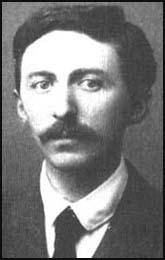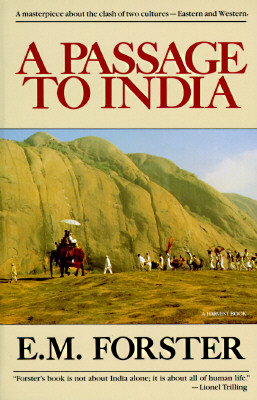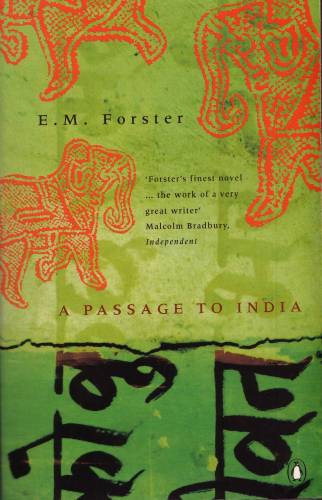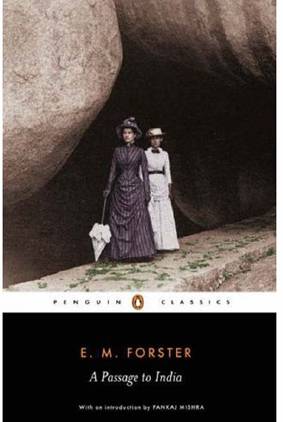A Passage To India - The Book
Edward Morgan Forster made 3 journeys to India. The first was between the years 1912 and 1913 with his friends Dickinson and Trevelyan. They travelled in India for about 3 months. Forster is noted as wearing Indian dress, sitting cross-legged to eat, visiting an opium den and the great event: meeting the Maharaja of Dewas, who in 1921-2 invited him back as his secretary. 'Morgan goes to India and I think forever,' wrote Virginia Woolf. 'He will become a mystic, sit by the roadside and forget Europe'.

E.M. Forster
This did not happen, though: he returned to work in the National Gallery of London from 1914 to 1915, and then for the International Red Cross in Alexandria, Egypt,until 1919, where he served as a "searcher" for missing soldiers. As a pacifist, Forster refused to fight in the First World War. In 1921 he returned to India and the states of Dewas and Chhatarpur, working for nearly a year as a private secretary to the Maharajah of Dewas, Saptasamasra Senapati Pratinidhi Shri Tikuji Rao Powar Bapusamis, and tutor to his son. The clothes that he wore at this time are preserved in the British in India Museum, 1 Newtown Street, Colne, Lancashire, England, but his visit was not as exotic as his first foray, as the maharajah and family spoke English and had adopted English domestic habits and manners. Forster later came to regard his stay in Dewas as the 'great opportunity' of his life. His book 'The Hill of Devi' was written then: it consists of Forster's letters sent primarily to his mother and other relatives, and reminiscences of his life in India.
He travelled widely in the district during his stay, and it has been said that the 'Marabar Caves' of 'A Passage to India' were inspired by the Bagh Caves in the adjoining Dhar district, though it was later decided that they were based on the remarkable echoes in the Barabar Caves, some 35km north of Gaya, in the present-day state of Bihar.

Book Cover - A Passage To India
Although Forster began writing A Passage to India in 1913, just after his first visit to India, the novel was not revised and completed until well after his second visit. Finally published in 1924, 'A Passage to India' examines the racial misunderstandings and cultural hypocrisies that characterized the complex interactions between Indians and the English toward the end of the British occupation of India. It was to be his last novel. Incidentally, the title, 'A Passage to India', came from Walt Whitman's poem of the same name.
His final visit to India was a short trip in 1945. In 1946, Forster accepted a fellowship at Cambridge, where he remained until his death in 1970.

Book Cover - A Passage To India

Book Cover - A Passage To India
